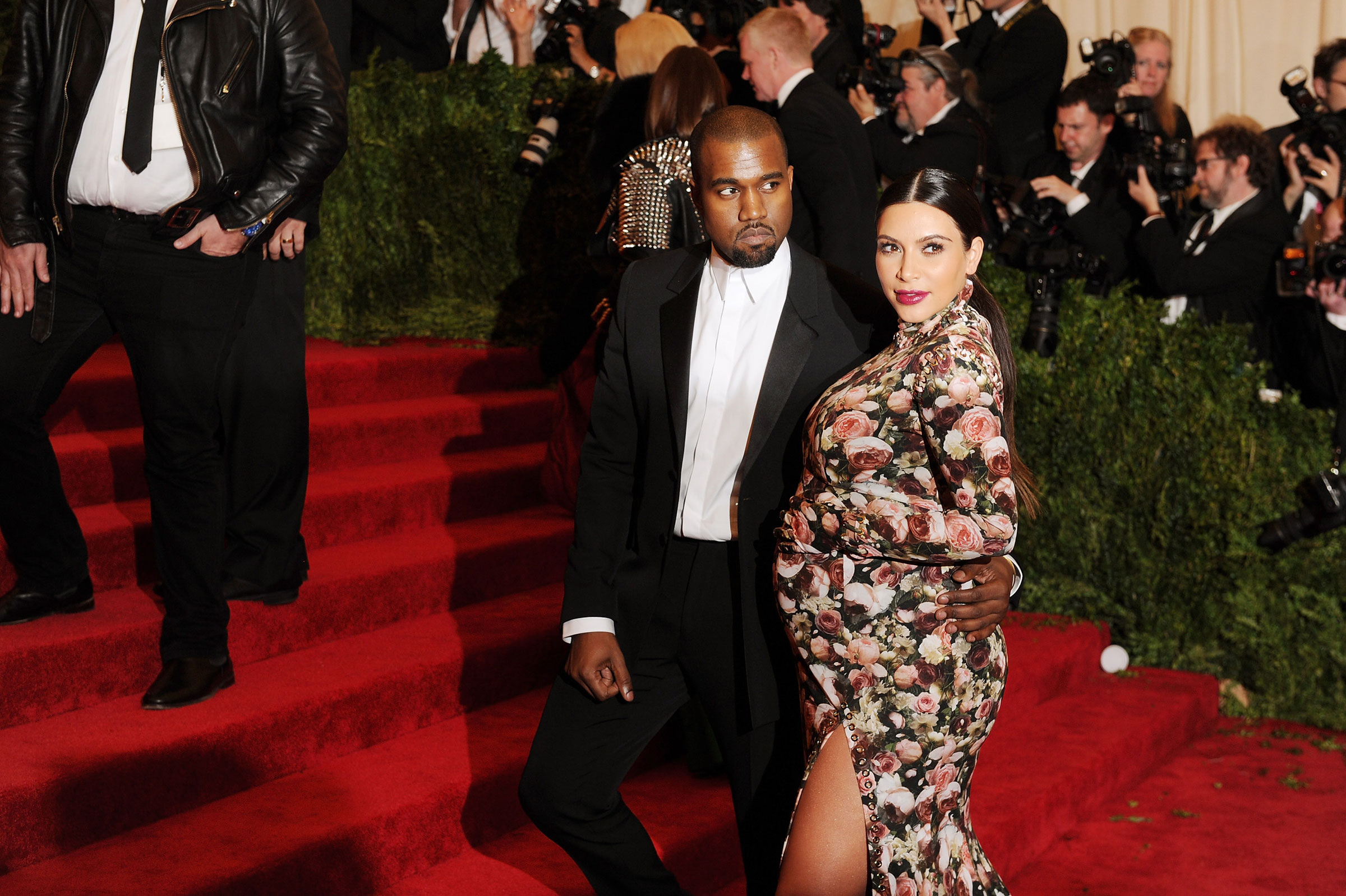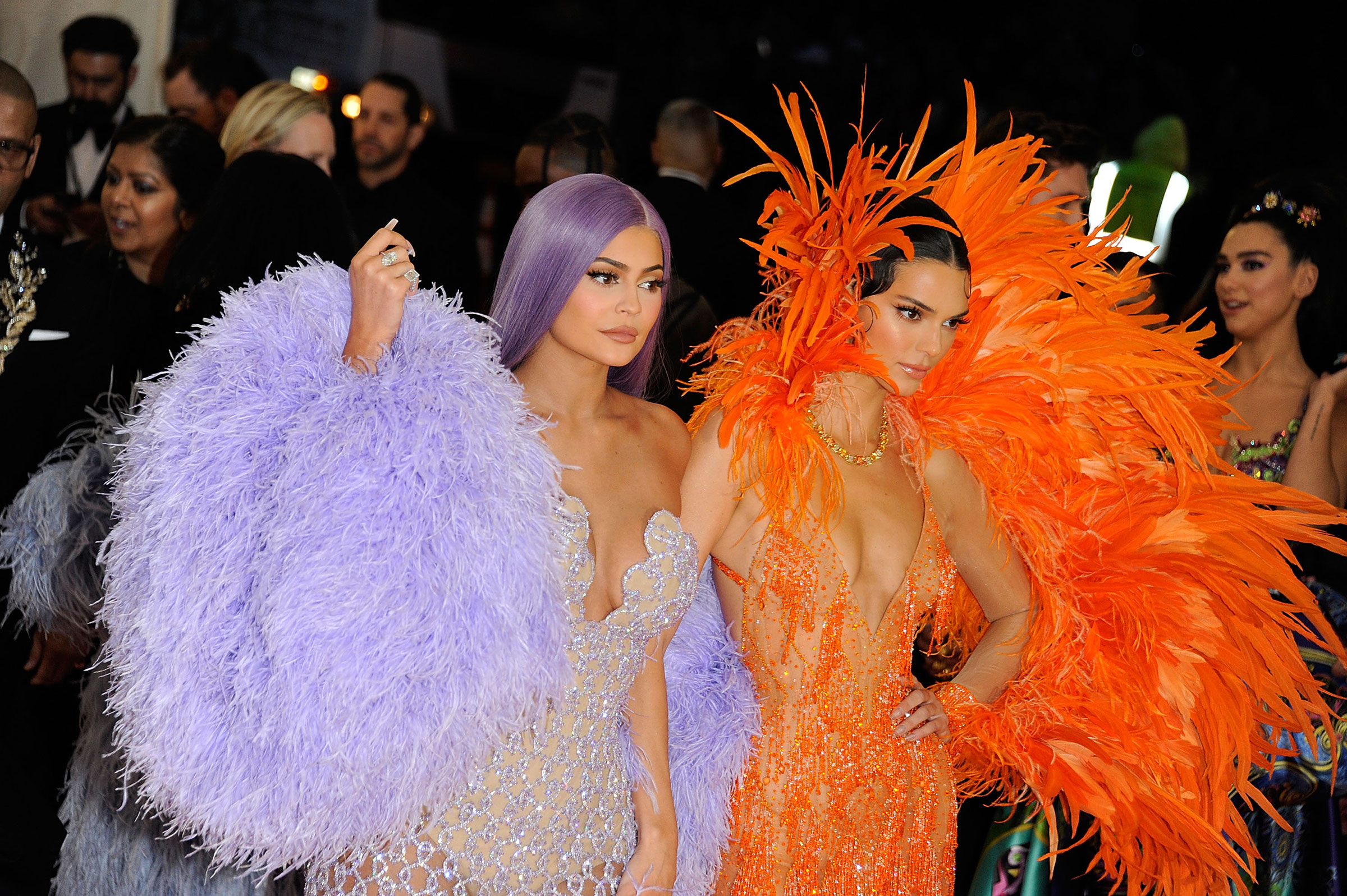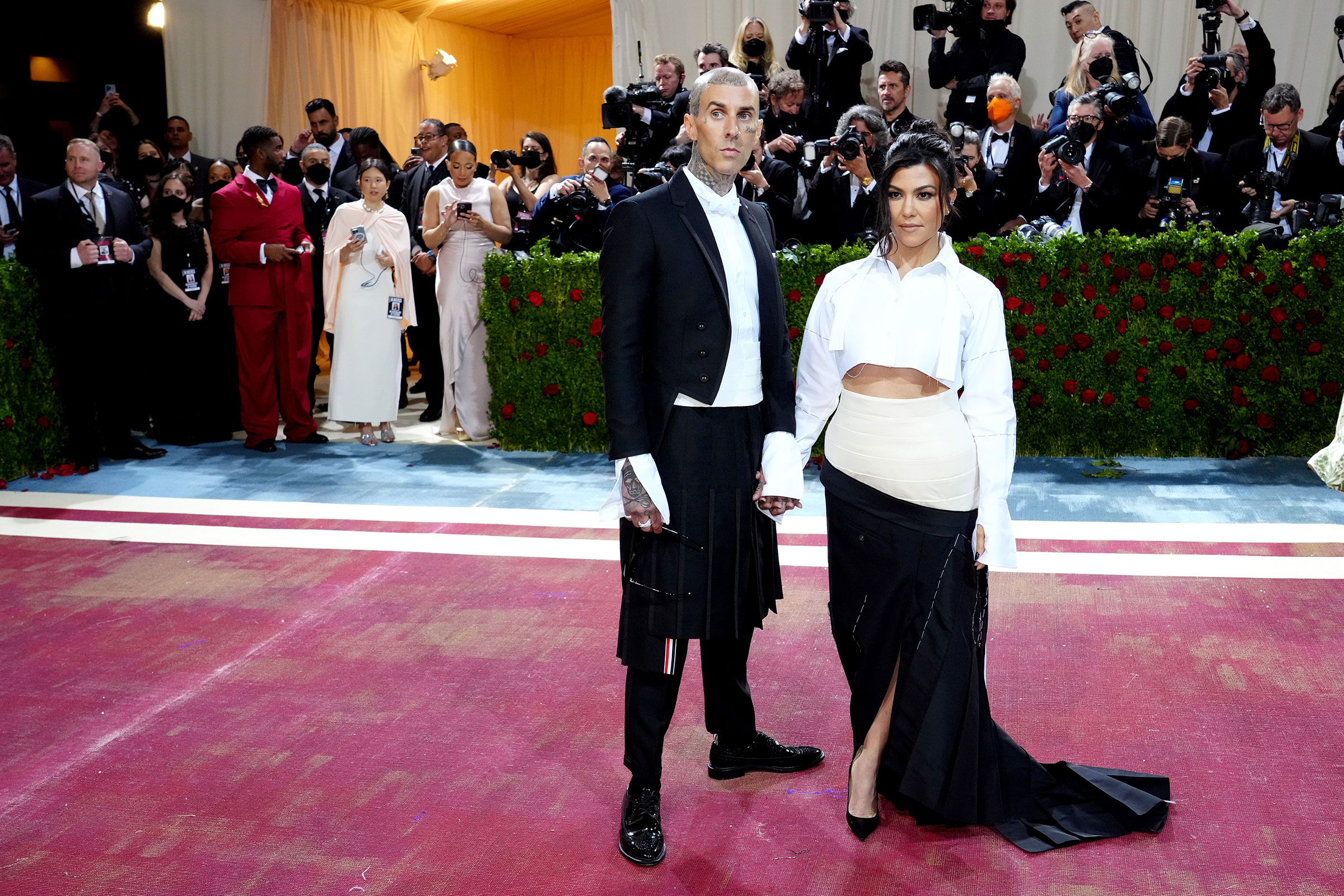Less than a week before the annual Met Gala, Kim Kardashian posted a selfie with Choupette, the notoriously pampered cat who belonged to the late designer Karl Lagerfeld. While selfies with fellow social media stars (Choupette currently has more than 150K followers on Instagram) are par for the course for Kardashian, the snap appeared to be a response to a recent rumor that no one from her famous family would be in attendance at this year’s Costume Institute benefit, often referred to as “fashion’s biggest night.”
“Had a date with @choupetteofficiel in Paris. We then spent some time at @karllagerfeld’s office to get a little inspiration for the Met,” Kardashian wrote in the caption to her post, seeming to confirm that she will attend the May 1 event, Karl Lagerfeld: A Line of Beauty.
But whether or not Kardashian walked up the famed steps to the museum, her presence (or lack thereof) would have taken center stage. In recent years, the influence of Kardashian and her family on the fashion industry has become undeniable. The Kardashians and Jenners have now become essential to the very systems that once regarded them as striving outsiders—and few things better tell the story of their rise to power in fashion like their history at the Met Gala.
More from TIME
The Kardashians’ history at the Met Gala
The first time Kim Kardashian attended the Met Gala was in 2013, as the date of her then-fiancé Kanye West (who now goes by the name Ye), who was performing. Kardashian was seven months pregnant with their first child, North, and wore a Givenchy floral dress with matching gloves that drew comparisons online to couch fabric and instantly became a meme. In a 2019 interview with Vogue, Kardashian shared that the scrutiny online made her cry.

“I wasn’t actually invited—I was just Kanye’s plus-one and that was OK with me, because I never really dreamed that I would be at the Met ball,” she said. “I know no one really probably wanted me there at the time… I was so insecure and I could never really speak up at that point because I was just so shy and wanted to make everyone really happy.”
If Kardashian’s comments seem dramatic, it’s worth considering that in previous years, rumors had swirled that Anna Wintour, the editor-in-chief of American Vogue and chairwoman of the Met Gala since 1995, had blacklisted the Kardashian-Jenner family from the annual event. At the time of Kardashian’s first Met appearance, Instagram was only a few years old, and influencers were largely fashion bloggers who were rarely taken seriously by industry leaders. Celebrities like Kardashian who became famous merely for existing lacked the platforms they have now, and her family’s primary capital was the reality TV show Keeping Up With the Kardashians, then in its eighth season and though hugely popular, a far cry from their current empire of brands and businesses. At the time, the family’s arsenal of brands was limited to DASH, the retail stores they once ran, a fledgling beauty brand, and an online game.
Read More: How Anna Wintour Wields Her Power
Kanye, who had long enjoyed a working relationship with Wintour and Vogue, helped Kim get a foot in the door in 2013, but her own growing influence garnered her a formal invitation the next year. MJ Corey, a writer and researcher who theorizes about the Kardashians on social media under the handle @kardashian_kolloquium, argued that Kim’s first time at the Met Gala helped usher in a new era for influencers in fashion.
“It marked a shift from the insularity typically associated with the Met Gala into this influencer culture that Anna Wintour could not ignore,” Corey told TIME. Corey also pointed out that 2014—the year when Kardashian received her first official invitation to the Met Gala—was the same year she landed her first Vogue cover, alongside West, where they were dubbed “the world’s most talked about couple.” These two gestures marked the beginning of a relationship between the Kardashian-Jenner family and fashion’s most hallowed institution.
Amy Odell, the author of the 2022 book Anna: The Biography, agrees with Corey that Kim Kardashian’s invitation to the Met Gala in 2014 was a turning point. “She wasn’t always a fashion girl, but then that changed for her when Anna embraced her,” Odell told TIME. “Kim has benefitted hugely from being in Anna’s circle of approval and being able to move in the fashion world as probably the No. 1 fashion influencer.”

Kardashian has attended every Met Gala that the Costume Institute has thrown since her first; her outfits, which have ranged from an avant-garde, BDSM-inspired black Balenciaga dress with a full balaclava to a historical piece belonging to Marilyn Monroe, have incited controversy, rage, obsession, and always a bevy of searches, clicks, likes, and shares. During this period, she and her sister Kendall Jenner have each landed three American Vogue covers. The family has now built out 11 brands, primarily in the fashion and beauty worlds, and in 2020 Forbes reported that Kim Kardashian, Kendall Jenner, Kylie Jenner, Kourtney Kardashian, Khloé Kardashian, and “momager” Kris Jenner would be ending the run of Keeping Up With the Kardashians with a collective fortune exceeding $2 billion. Last spring, in a viral power move, the family commanded the internet and industry’s full attention when all five sisters, Kris, and their respective partners attended the Met Gala together for the first time.
The changing face of influence in the fashion industry
Odell made the case that the relationship between Vogue and the Kardashians is one that has served both parties well—but that it particularly reflects Wintour’s savvy when it comes to bridging the worlds of fashion and entertainment and evolving both her magazine and her event to meet the moment. She points out that editorial choices such as putting celebrities like Madonna on the cover of Vogue in the ’90s, as opposed to models, helped to usher in a new industry standard.
“The celebrity cover has just exploded in the late ’90s and beyond,” Odell said. “And I don’t think it’s an accident that that happened at the same time that she also transformed the gala and made it more of an entertainment celebrity event, as opposed to a New York society party.”

Over the nearly three decades since Wintour has been at the helm of the Met Gala, the editor has taken what was once a conventional society event and turned it into a global red-carpet show. And as fashion has become more and more reliant on online influence, Wintour has adapted the Met Gala accordingly, whether through creating Instagrammable, gargantuan floral arrangements (now a signature of the event), tapping YouTube personalities like Emma Chamberlain for Vogue’s red-carpet interviews, or ensuring that buzzworthy and very online celebrities like the Kardashians and Jenners are on the guest list.
“Over her career, she’s been really good at understanding where the culture is,” Odell said. “She knows the purpose of these events nowadays. It’s not to watch on TV—it’s to provide pictures for people to talk about on TikTok or Instagram reels. Little moments for the internet today rule, so leaving them out would be really unwise.”
What the Kardashians’ attendance at the Met Gala means for the future of fashion
For Corey, the Kardashian-Jenner family’s history at the Met Gala tells a larger story about a shift in power, one where fashion institutions haven’t just adjusted to the influencer economy but have become reliant on it. As part of a research group she co-founded called the Kardashian Data Koalition, Corey and her colleagues found that Google searches for “Kim Kardashian” have surged above searches for “Anna Wintour” or “Vogue” the day after the Met Gala since her first appearance in 2013.
“These institutions may have power from elitism, history, and heritage, but they will collapse in the face of new media and its power if they can’t build a new and interactive relationship with this audience,” Corey said, adding that Kim Kardashian’s need for legitimacy and Vogue’s need for online engagement at first fostered a symbiotic relationship. “But now in an influencer economy,” Corey continued, “someone like Kim may be serving the institution more than they’re serving her.”
Read More: Kim Kardashian Revisits American History By Wearing Marilyn Monroe’s Iconic Dress to the Met Gala
Corey also pointed to the outsize role that the Met Gala has played in storylines on the family’s Hulu show The Kardashians, comparing it to the product-placement formula that longtime Keeping Up With the Kardashians viewers will recognize from the family’s promotion of everything from local businesses to their own products. The support goes both ways: organizers of the Met Gala have catered to the family through accommodations like providing Kim her own dressing room on the red carpet when she wore Monroe’s dress to the 2022 event.

Even this year’s rumor that the Kardashian-Jenner family would not be attending the gala gave a publicity boost to Kim, the Met Gala, and Wintour, according to the Kardashian Data Koalition.
“Kim Kardashian is the social media age—she’s the symbol of it,” Corey said. “And in the sense that the social media era is eclipsing older industries, if fashion or legacy institutions are going to survive, they need her there for visibility and for us to engage—or else they don’t exist.”
More Must-Reads from TIME
- Cybersecurity Experts Are Sounding the Alarm on DOGE
- Meet the 2025 Women of the Year
- The Harsh Truth About Disability Inclusion
- Why Do More Young Adults Have Cancer?
- Colman Domingo Leads With Radical Love
- How to Get Better at Doing Things Alone
- Michelle Zauner Stares Down the Darkness
Write to Cady Lang at cady.lang@timemagazine.com